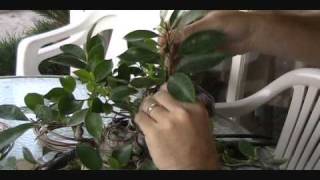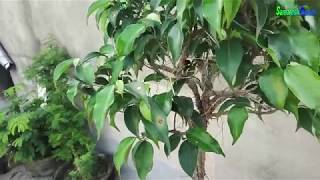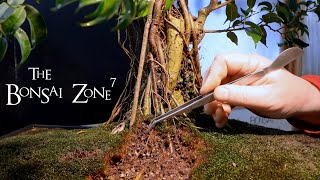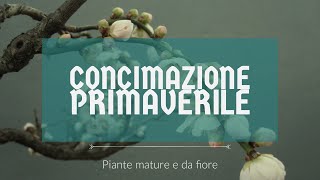Friday, 02 January, 2026г.
















Где искать: по сайтам Запорожской области, статьи, видео ролики
пример: покупка автомобиля в Запорожье
Ginseng Ficus: The Perfect Bonsai Tree for the Beginner
Ginseng Ficus, also called Ficus microcarpa, Ficus retusa, and banyan fig, is not the medicinal ginseng plant, but a type of fig. You will be pleasantly surprised to find that a Ginseng Ficus bonsai tree is not only great looking but extremely easy to care for.
Low Maintenance
Ginseng Ficus is a low-maintenance bonsai that can be grown indoors or outdoors. Of course if you live in an area where temperatures drop below 68 degrees, your little tree should be grown indoors. This type of bonsai can survive without direct sunlight, but you will have a much happier and healthier tree if you place it near a window or an area that receives a lot of sunlight.
Too Much or Too Little Water?
This particular tree does not need much attention. You will only need to water it once or twice a week at most. If you over-water it occasionally, this bonsai will adjust.; if you forget to water it on occasion, it will not get mad at you and shrivel up. You will know if you are not giving it enough water because the dark green leaves will start to turn yellow. The best way to keep your Ginseng Ficus moist and happy is to mist it with a spray bottle every day.
Pruning
A healthy Ginseng Ficus will grow many leaves. Some leaves may fall off naturally due to changes in the weather, the amount of light, or the watering schedule. Most Ginseng Ficus bonsais will adjust to their new environment within one or two weeks.
The basic rule of thumb is that for every six leaves that grow in, three leaves should be removed. This rule will depend on your personal preference as well as your bonsai's individual size and shape.
Repotting
Your ginseng ficus bonsai is a slow grower and should only need to be repotted every one to three years depending on the speed of its growth. Repotting should always take place right after the colder season and the beginning of the spring season.
The Gift That Keeps Growing
If you are interested in bonsai, these cute and hearty little Ginseng Ficus trees can spruce up any room or office. They are very easy to care for and a relatively inexpensive way to learn the bonsai practice.
Похожие видео
Мой аккаунт


 У вашего броузера проблема в совместимости с HTML5
У вашего броузера проблема в совместимости с HTML5


